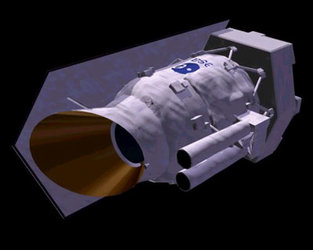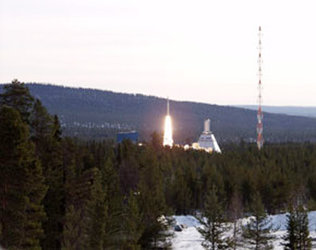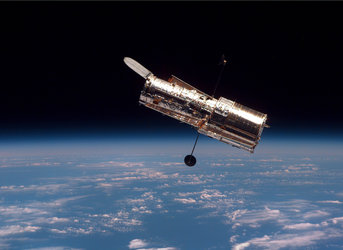6 April
2000: On 6 April 2000, ESA announced that a chance encounter between Ulysses, the joint ESA/NASA spacecraft, and a comet's tail was leading scientists to conclude that comet tails extend much further than anyone supposed - right to the edge of the Solar System.
Two papers published in Nature on this date reported that four years previously, on 1 May 1996, Ulysses flew through the tail of Comet Hyakutake whose nucleus was more than 3.5 Astronomical Units (AU) - one AU equals the Sun-Earth distance - away at the time. "This makes it the longest comet tail ever recorded", said Geraint Jones from Imperial College, University of London, a member of one of the two instrument teams that made the discovery.
"Ulysses's prime task is to map the solar wind above the Sun's poles: it had not been looking for Hyakutake, which happened to be at its closest approach to the Sun on 1 May 1996, or any other comet," said Richard Marsden, ESA's Ulysses Project Scientist. "Ulysses was just in the right place at the right time."
The two teams stumbled across the telltale signature of a comet quite independently when poring over old Ulysses data. Jones and colleagues found their evidence in magnetic field data.The other instrument team, lead by George Gloeckler from the University of Maryland, found their evidence when looking at the composition of the solar wind. Cometary tails are rich in oxygen and carbon compared with the solar wind, but depleted in nitrogen and neon.
The Imperial College team identified Hyakutake as the source of the anomalous readings. On 1 May 1996, Ulysses was aligned with the Sun and the position Hyakutake had occupied eight days earlier, which Jones calculated was the time needed for material leaving the comet's nucleus to travel the distance to Ulysses.

1993: On 6 April 1993, scientists using the ESA/NASA International Ultraviolet Explorer (IUE) found direct evidence that red supergiant stars end their existence in massive explosions known as supernovae. Twelve million light years away, in the galaxy known as M81, the Type II supernova was designated SN 1993J, the tenth supernova of the year.
IUE was launched into Earth orbit in January 1978.
1965: On 6 April 1965, the United States launched the 'Early Bird' Intelsat 1, the first commercial geosynchronous communications satellite.
648 BC: On 6 April 648 BC, the earliest total solar eclipse recorded by Greeks was observed.











